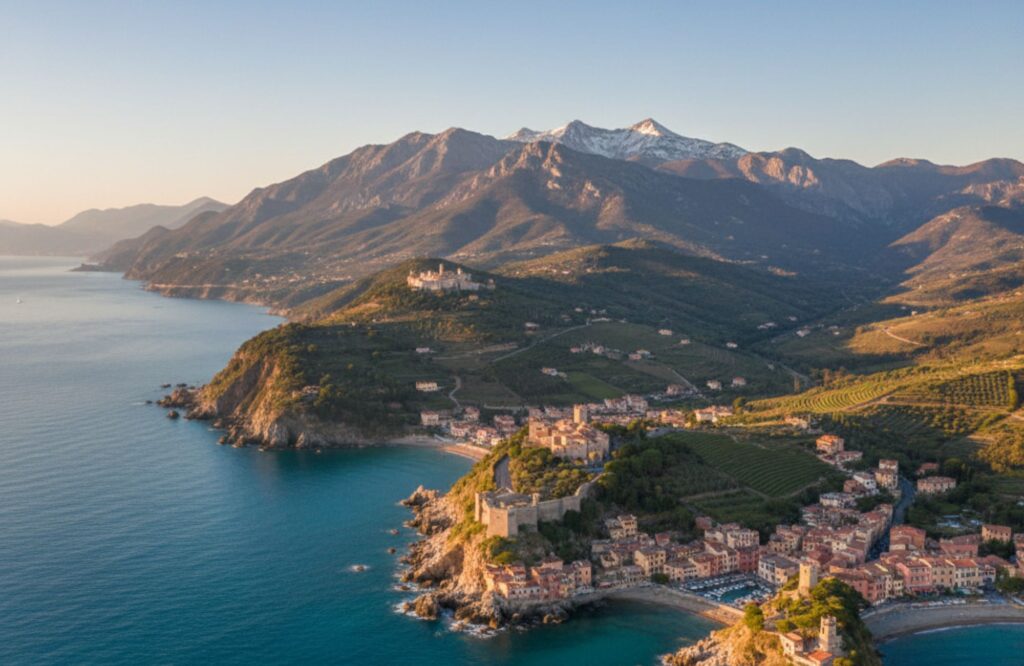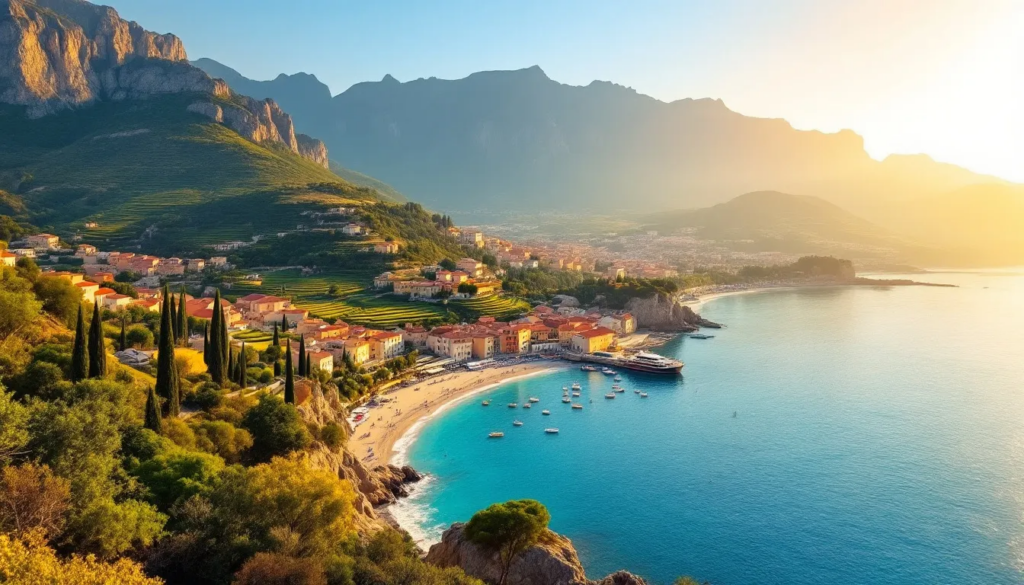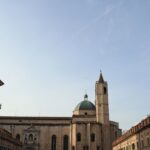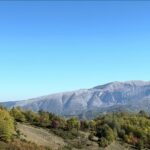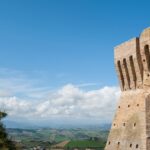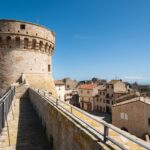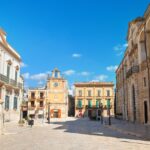The Apennine Peninsula (also known as the penisola italiana or Italic Peninsula) is the backbone of Italy, stretching across the country from its northern borders to the southern tip. Located in Southern Europe, within the broader context of Europe, this distinctive land is famous for its boot-like shape, often referred to as “lo stivale.” The peninsula is a prominent landmass that extends into the Mediterranean Sea and is surrounded by several seas, including the Adriatic, Ligurian, Tyrrhenian, and Ionian Seas. Often overshadowed by the grandeur of Italy’s more famous coastal cities and iconic landmarks, this mountainous region offers a unique and rich natural landscape that beckons adventurers and history lovers alike. If you’ve ever wondered about the mountain range that forms the heart of Italy, the Apennine Peninsula provides a vast array of hiking trails, cultural sites, and vibrant ecosystems, perfect for those seeking a less-traveled path.
What is the Apennine Peninsula?
The Apennine Peninsula refers to the central and most mountainous region of Italy, formed by the Apennine mountain range that extends from the Alps at the northern end to the southern tip of Italy. The peninsula is bordered by the Adriatic Sea to the east, the Tyrrhenian Sea and the Tyrrhenian coast to the west, and the Ionian Sea to the south. Its northern border is traditionally marked by the Alps, though some definitions use rivers such as the Magra and Rubicon to define the northern end. The Apennines pass through northern Italy and continue south, separating the country into different regions: the coastal areas to the west and east, including the east coast along the Adriatic Sea, and the fertile interior plains and valleys. Almost all of the peninsula is part of the Italian Republic, with the exceptions of the microstates of San Marino and Vatican City.
This peninsula stretches over 1,200 kilometers, offering hikers, nature enthusiasts, and travelers a blend of scenic beauty and historical sites. The Italian Republic includes various territories, such as the main peninsula, the island of Sicily, the island of Sardinia, and smaller peninsulas like the Gargano spur, which contribute to Italy’s distinctive boot shape. From towering mountains like Corno Grande to the serene lowlands, plains, and rivers, the Apennine Peninsula is a true gem for outdoor exploration. The region is also characterized by the Ligurian Gulf near Genoa, the diverse habitats along the Tyrrhenian coast, and the ecological distinctions of the east coast and lowlands.
Best Hiking Trails in the Apennine Peninsula
If you’re an adventure seeker or simply looking to connect with nature, the Apennine Peninsula and three smaller peninsulas offer some of Italy’s most breathtaking hiking trails. While summer is a popular season for hiking, some trails may be best enjoyed in spring or autumn due to the heat. Many routes start or end in a major city, giving you the chance to explore Italy’s vibrant urban centers as well.
Here are some of the top hiking routes in the region:
- Gran Sasso: This is the highest peak of the Apennines and provides a challenging yet rewarding hike. It’s ideal for seasoned trekkers seeking panoramic views of the region.
- Sibillini Mountains National Park: The park offers a range of difficulty levels for hikers and is home to the Monte Vettore, the second-highest mountain in the range. It’s also known for its wildflower meadows and crystal-clear lakes.
- Alta Via dei Monti Liguri long-distance trail runs through northern Liguria and offers spectacular coastal views, making it perfect for those looking to hike the entire length of the Apennines. The trail passes through or near the historical region known as the ‘March’ of Liguria.
- Cascata della Prata Waterfalls. Located near Acquasanta Terme, this is a moderate hike that takes visitors through forests to the stunning Prata Waterfalls, perfect for a day trip from Ascoli Piceno.
- Cilento and Vallo di Diano National Park: Explore charming medieval villages and stunning coastal views as you hike through one of the region’s lesser-known yet equally beautiful landscapes. Some trails in this area are accessible from the city of Naples, and others pass near the city-state of Vatican City.
For those interested in exploring the northeast, there are also trails accessible from Venice, allowing you to combine hiking with a visit to this iconic city.
Flora and Fauna of the Apennine Peninsula
The Apennine Peninsula is a treasure trove of biodiversity. As you hike through its forests, valleys, and alpine meadows, you’ll encounter a variety of flora and fauna that are unique to the region. The Apennine wolf, Marsican brown bear, and Italian wildcat are just a few examples of the wildlife that roam these mountains. The Tiber River, one of the most important waterways in the Italian Peninsula, supports diverse flora and fauna along its course and plays a crucial ecological role in the region.
The vegetation in the area is equally diverse, ranging from oak and chestnut forests in the lower elevations to alpine meadows at higher altitudes. The southern slopes of the Apennines are known for their unique ecological characteristics, supporting distinct plant and animal communities due to their specific climate and exposure. If you’re lucky, you might even spot wild boars, deer, and various species of birds, including golden eagles and griffon vultures.
Cultural and Historical Significance of the Apennine Peninsula
While the Apennine Peninsula is surrounded by renowned natural beauty, its cultural and historical significance cannot be overlooked. The region has long been the backdrop of Italy’s heritage, from ancient Roman settlements to medieval villages. Throughout history, a variety of ethnic groups have inhabited the area, contributing to its rich cultural diversity. Many towns in the Abruzzi and Tuscany Apennines boast well-preserved architecture, historic monasteries, and fortresses that tell the story of Italy’s medieval past.
The Apennines were also critical to the Roman Empire, serving as a natural barrier and trade route for merchants traveling through Italy. The region played a pivotal role during the Renaissance, influencing art, culture, and technological advances across Europe. Rome, the capital of Italy, stands out as a historically significant city, renowned for its ancient origins and as the heart of the Roman Empire. The peninsula is also home to unique independent city-states, such as San Marino and Vatican City, both of which are notable for their small size, political independence, and historical importance. Today, you can visit hilltop villages, where traditions such as artisan craftsmanship and local cuisine have remained largely unchanged for centuries.
The Climate of the Apennine Peninsula
The climate of the Apennine Peninsula varies based on elevation and geography. The higher elevations of the central and southern Apennines experience colder temperatures, with snowfall in winter, making them perfect for skiing. Compared to other mountainous regions in the world, the Apennines offer a unique blend of Mediterranean and Alpine climates. In contrast, the lower-lying regions near the Tyrrhenian Sea enjoy a milder Mediterranean climate, with hot summers and mild winters.
The best time to visit for hiking is during the spring and early autumn when temperatures are moderate, and the landscape is lush with wildflowers and vibrant foliage. In winter, some parts of the Abruzzi and Tuscan Apennines offer fantastic opportunities for skiing and snowshoeing, particularly around Roccaraso and Campo Imperatore.
Outdoor Activities in the Apennine Peninsula
The Apennine Peninsula is a playground for outdoor enthusiasts, with plenty of activities suitable for kids and families. Beyond hiking, the region offers numerous activities, including:
- Skiing in the Tuscan and Abruzzi Apennines.
- Rock climbing in the Gran Sasso and Sibillini Mountains.
- Cycling on the well-marked trails that cross the region.
- Birdwatching in protected areas such as Cilento National Park.
- Fishing in the many lakes and rivers of the Apennines.
- Outdoor adventures on nearby islands like Sicily and Sardinia, where you can explore beaches, nature reserves, and family-friendly activities.
These activities, combined with the region’s pristine nature and diverse landscapes, make the Apennine Peninsula a year-round destination.
Conclusion
The Apennine Peninsula offers an unparalleled blend of natural beauty, rich history, and cultural significance, surrounded by beautiful islands, making it a must-visit destination for those seeking an authentic Italian experience. From its stunning hiking trails and unique wildlife to its charming villages and medieval landmarks, this region provides a wealth of opportunities for adventure and exploration. Whether you’re an avid hiker, a history enthusiast, or simply someone looking to escape the crowds, the Apennine Peninsula is an ideal place to discover the heart of Italy. Embark on your own journey through this hidden gem, and let True Colors of Italy guide you to the best spots in the region, ensuring a memorable and immersive experience.
Ready to experience the Apennine Peninsula in an authentic, stress-free way? At True Colors of Italy, we specialize in private, all-inclusive tours that showcase the region’s rich culture, breathtaking landscapes, and local cuisine. Whether you’re hiking the scenic trails of the Apennine Mountains or exploring charming villages, our curated experiences are designed to provide you with deep, local insight and unmatched comfort. Contact us today to start planning your personalized adventure in the heart of Italy!
FAQs
What countries are on the Apennine Peninsula?
The Apennine Peninsula is located entirely in Italy, as seen from a satellite view, where the Apennine mountain range runs through its central spine. Nearly all of the Apennine Peninsula is part of the Italian Republic, except the microstates of San Marino and Vatican City.
Why is it called the Apennine Peninsula?
It is named after the Apennine Mountains, which dominate the landscape and form the backbone of the peninsula. The Apennine Peninsula is also known as the penisola italiana or Italic Peninsula, and is often referred to as lo stivale due to its distinctive boot-like shape.
What is the Italian peninsula called?
The Italian Peninsula, often called “the boot”, is where Italy is located. The Apennines are its central mountain range, running from the Alps to the southern tip.

